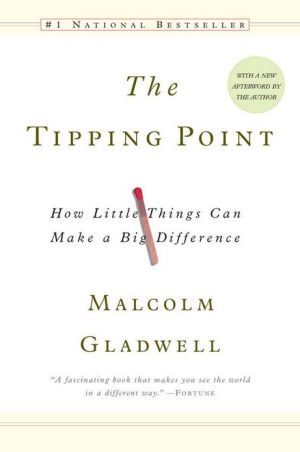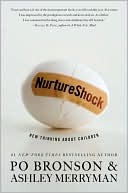What Every Body Is Saying: An Ex-FBI Agent's Guide to Speed-Reading People
He says that's his best offer. Is it?\ She says she agrees. Does she?\ The interview went great—or did it?\ He said he'd never do it again. But he did.\ \ Read this book and send your nonverbal intelligence soaring. Joe Navarro, a former FBI counterintelligence officer and a recognized expert on nonverbal behavior, explains how to "speed-read" people: decode sentiments and behaviors, avoid hidden pitfalls, and look for deceptive behaviors. You'll also learn how your body language can...
Search in google:
He says that's his best offer. Is it? She says she agrees. Does she? The interview went great—or did it? He said he'd never do it again. But he did. Read this book and send your nonverbal intelligence soaring. Joe Navarro, a former FBI counterintelligence officer and a recognized expert on nonverbal behavior, explains how to "speed-read" people: decode sentiments and behaviors, avoid hidden pitfalls, and look for deceptive behaviors. You'll also learn how your body language can influence what your boss, family, friends, and strangers think of you. You will discover: The ancient survival instincts that drive body language Why the face is the least likely place to gauge a person's true feelings What thumbs, feet, and eyelids reveal about moods and motives The most powerful behaviors that reveal our confidence and true sentiments Simple nonverbals that instantly establish trust Simple nonverbals that instantly communicate authority Filled with examples from Navarro's professional experience, this definitive book offers a powerful new way to navigate your world. School Library Journal Adult/High School This book illustrates which nonverbal clues telegraph untrustworthiness and deception and which radiate sincerity and compassion. In this fascinating take on body language and the ability to decipher it for use in everyday life, Navarro emphasizes that while knowing the reasons for certain behaviors-like touching one's neck-can be useful in "reading" people, they are not foolproof barometers of deception. A former FBI agent who commonly used these techniques to help crack cases, the author cautions about jumping to conclusions and encourages using clusters of nonverbal patterns to help discover whether a person is lying or just under stress. One chapter is devoted to the brain and its limbic system, which controls those involuntary quirks of behavior. Black-and-white photos illustrate different points throughout. This book is a worthy research tool, and a good addition to larger collections.-Charli Osborne, Oxford Public Library, MI
What Every BODY is Saying\ An Ex-FBI Agent’s Guide to Speed-Reading People \ Chapter One\ Mastering the Secrets of Nonverbal Communication\ Whenever I'm teaching people about "body language," this question is invariably asked. "Joe, what got you interested in studying nonverbal behavior in the first place?" It wasn't something I had planned to do, nor was it the result of some long-term fascination with the topic. It was much more down-to-earth than that. It was an interest born of necessity, the need to adapt successfully to a totally new way of life. When I was eight years old, I came to America as an exile from Cuba. We left just a few months after the Bay of Pigs invasion, and we honestly thought we would be here only for a short while as refugees.\ Unable to speak English at first, I did what thousands of other immigrants coming to this country have done. I quickly learned that to fit in with my new classmates at school, I needed to be aware of—and sensitive to—the "other" language around me, the language of nonverbal behavior. I found that was a language I could translate and understand immediately. In my young mind, I saw the human body as a kind of billboard that transmitted (advertised) what a person was thinking via gestures, facial expressions, and physical movements that I could read. Over time, obviously, I learned English—and even lost some skill with the Spanish language—but the nonverbals, I never forgot. I discovered at an early age that I could always rely on nonverbal communications.\ I learned to use body language to decipher what my classmates and teachers were trying to communicateto me and how they felt about me. One of the first things I noticed was that students or teachers who genuinely liked me would raise (or arch) their eyebrows when they first saw me walk into the room. On the other hand, those individuals who weren't too friendly toward me would squint their eyes slightly when I appeared—a behavior that once observed is never forgotten. I used this nonverbal information, as so many other immigrants have, quickly to evaluate and develop friendships, to communicate despite the obvious language barrier, to avoid enemies, and in nurturing healthy relationships. Many years later I would use these same nonverbal eye behaviors to solve crimes as a special agent at the Federal Bureau of Investigation (FBI) (see box 1).\ Based on my background, education, and training, I want to teach you to see the world as an FBI expert on nonverbal communication views it: as a vivid, dynamic environment where every human interaction resonates with information, and as an opportunity to use the silent language of the body to enrich your knowledge of what people are thinking, feeling, and intending to do. Using this knowledge will help you stand out among others. It will also protect you and give you previously hidden insight into human behavior.\ What exactly is nonverbal communication?\ Nonverbal communication, often referred to as nonverbal behavior or body language, is a means of transmitting information—just like the spoken word—except it is achieved through facial expressions, gestures, touching (haptics), physical movements (kinesics), posture, body adornment (clothes, jewelry, hairstyle, tattoos, etc.), and even the tone, timbre, and volume of an individual's voice (rather than spoken content). Nonverbal behaviors comprise approximately 60 to 65 percent of all interpersonal communication and, during lovemaking, can constitute 100 percent of communication between partners (Burgoon, 1994, 229-285).\ Nonverbal communication can also reveal a person's true thoughts, feelings, and intentions. For this reason, nonverbal behaviors are sometimes referred to as tells (they tell us about the person's true state of mind). Because people are not always aware they are communicating nonverbally, body language is often more honest than an individual's verbal pronouncements, which are consciously crafted to accomplish the speaker's objectives (see box 2).\ Whenever your observation of another person's nonverbal behavior helps you understand that person's feelings, intentions, or actions—or clarifies his or her spoken words—then you have successfully decoded and used this silent medium.\ Using nonverbal behavior to enhance your life\ It has been well established by researchers that those who can effectively read and interpret nonverbal communication, and manage how others perceive them, will enjoy greater success in life than individuals who lack this skill (Goleman, 1995, 13-92). It is the goal of this book to teach you how to observe the world around you and to determine the meaning of nonverbals in any setting. This powerful knowledge will enhance your personal interactions and enrich your life, as it has mine.\ One of the fascinating things about an appreciation for nonverbal behavior is its universal applicability. It works everywhere humans interact. Nonverbals are ubiquitous and reliable. Once you know what a specific nonverbal behavior means, you can use that information in any number of different circumstances and in all types of environments. In fact, it is difficult to interact effectively without nonverbals. If you ever wondered why people still fly to meetings in the age of computers, text messages, e-mails, telephones, and video conferencing, it is because of the need to express and observe nonverbal communications in person. Nothing beats seeing the nonverbals up close and personal. Why? Because nonverbals are powerful and they have meaning. Whatever you learn from this book, you will be able to apply to any situation, in any setting. Case in point (see box 3 on next page):\ Mastering nonverbal communications requires a partnership\ I am convinced that any person possessing normal intelligence can learn to use nonverbal communication to better themselves. I know this because for the past two decades I have taught thousands of people, just like you, how to successfully decode nonverbal behavior and use that information to enrich their lives, the lives of their loved ones, and to achieve their personal and professional goals. Accomplishing this, however, requires that you and I establish a working partnership, each contributing something of significance to our mutual effort.\ What Every BODY is Saying\ An Ex-FBI Agent’s Guide to Speed-Reading People. Copyright © by Joe Navarro. Reprinted by permission of HarperCollins Publishers, Inc. All rights reserved. Available now wherever books are sold.
\ David Givens"A masterful work on nonverbal body language by an exceptional observer. Joe Navarro’s work has been field-tested in the crucible of law enforcement at the highest levels within the FBI. I cannot praise the book enough."\ \ \ \ \ School Library JournalAdult/High School\ This book illustrates which nonverbal clues telegraph untrustworthiness and deception and which radiate sincerity and compassion. In this fascinating take on body language and the ability to decipher it for use in everyday life, Navarro emphasizes that while knowing the reasons for certain behaviors-like touching one's neck-can be useful in "reading" people, they are not foolproof barometers of deception. A former FBI agent who commonly used these techniques to help crack cases, the author cautions about jumping to conclusions and encourages using clusters of nonverbal patterns to help discover whether a person is lying or just under stress. One chapter is devoted to the brain and its limbic system, which controls those involuntary quirks of behavior. Black-and-white photos illustrate different points throughout. This book is a worthy research tool, and a good addition to larger collections.-Charli Osborne, Oxford Public Library, MI\ \ \








